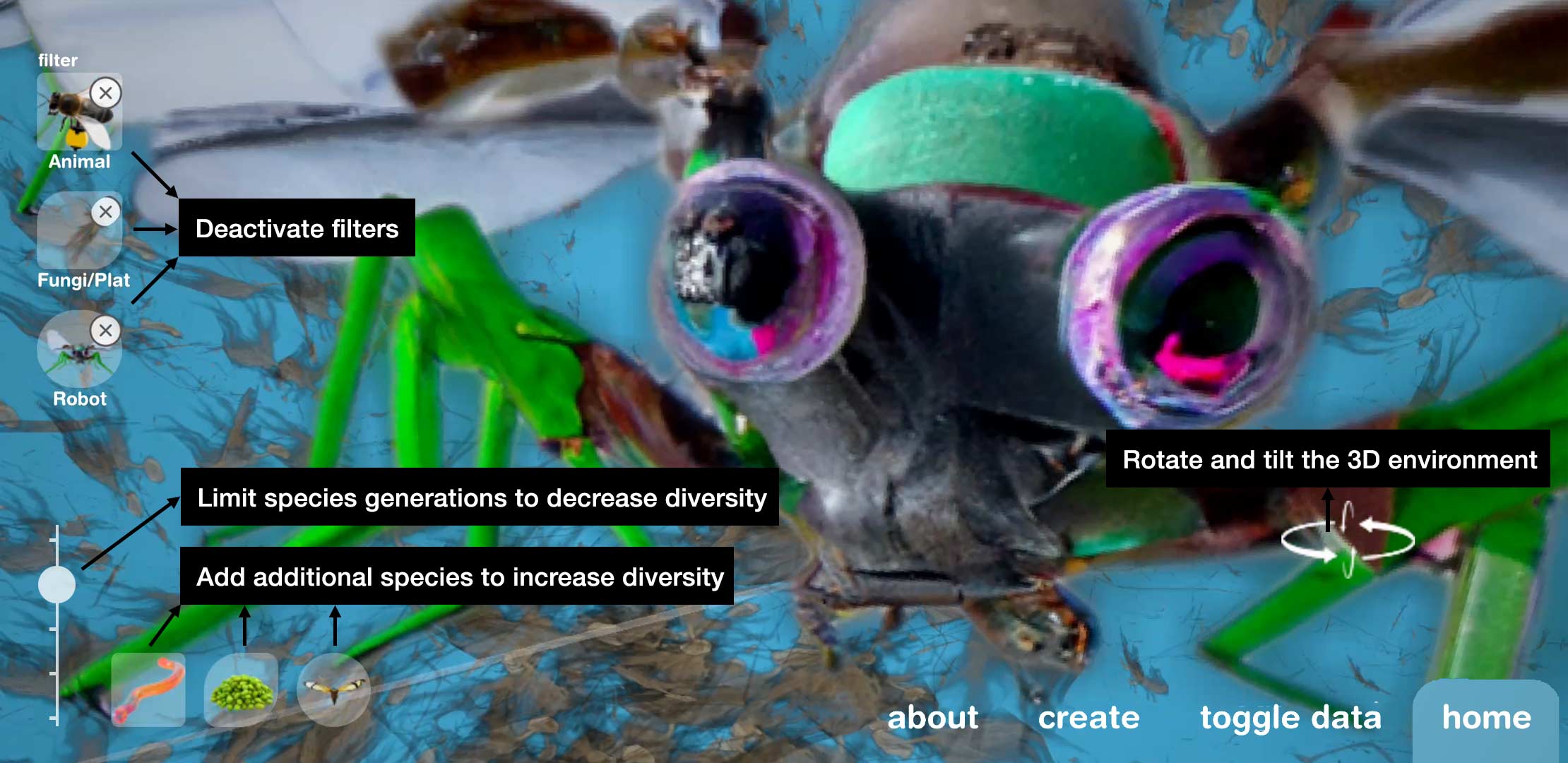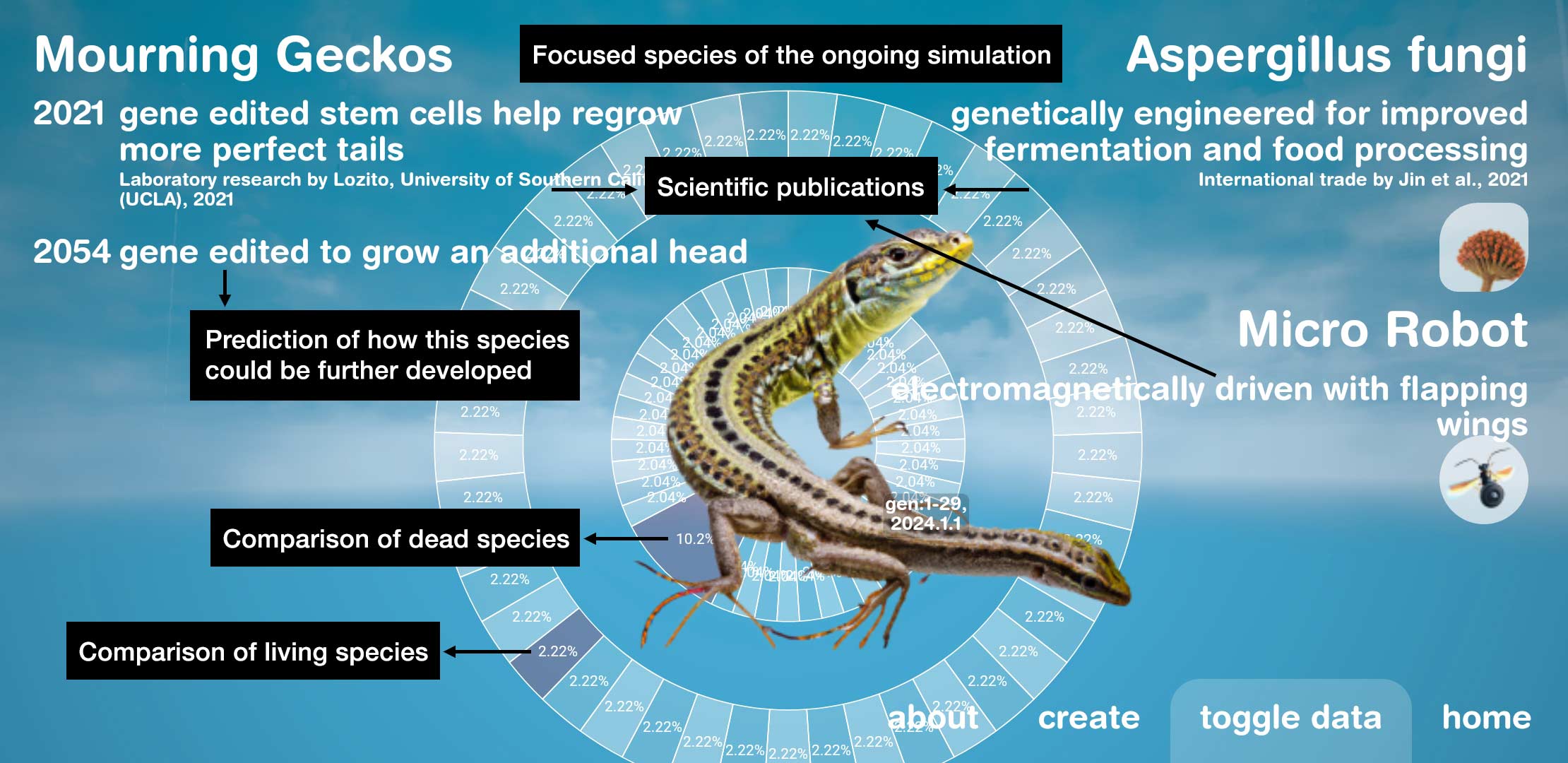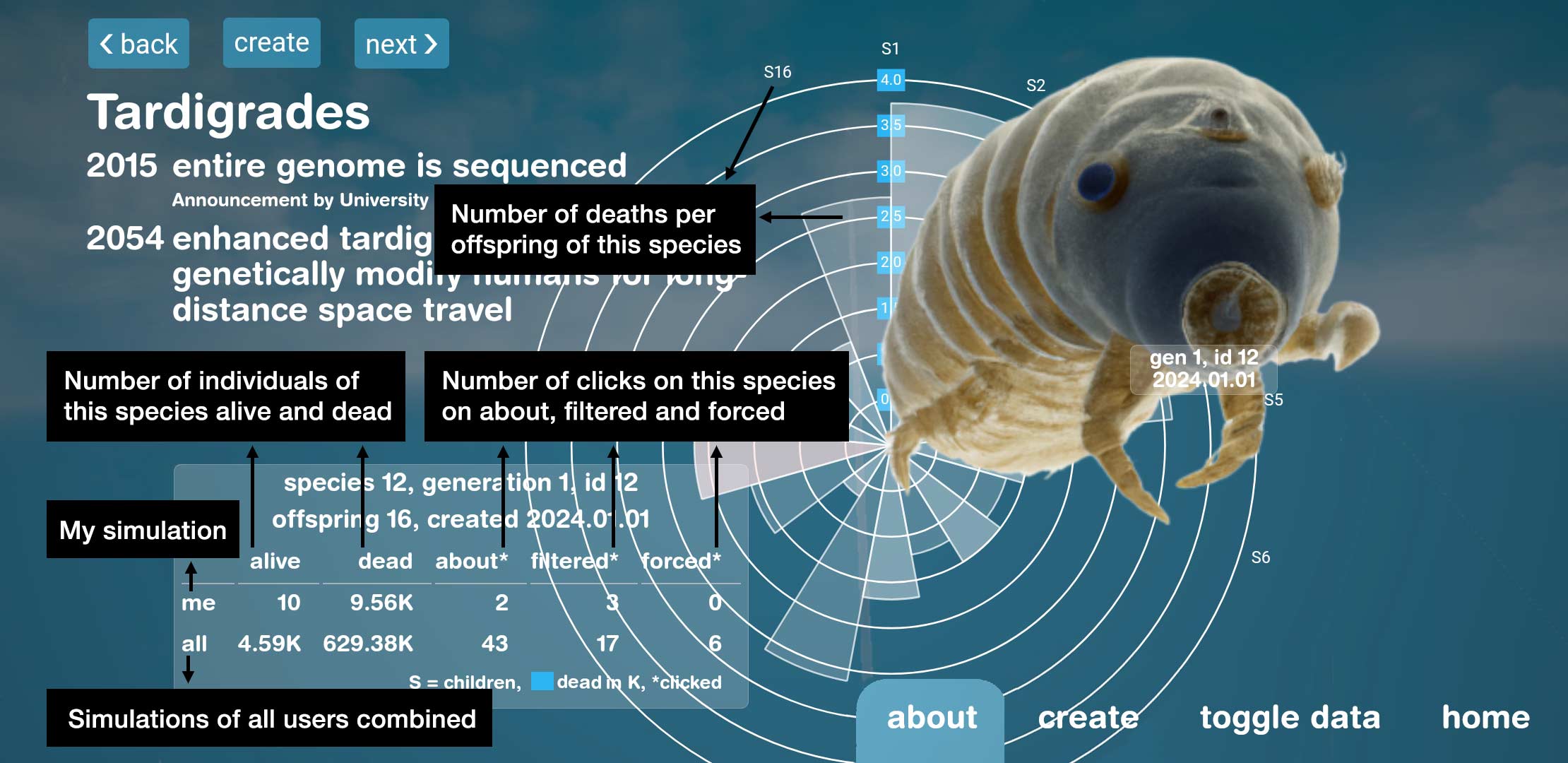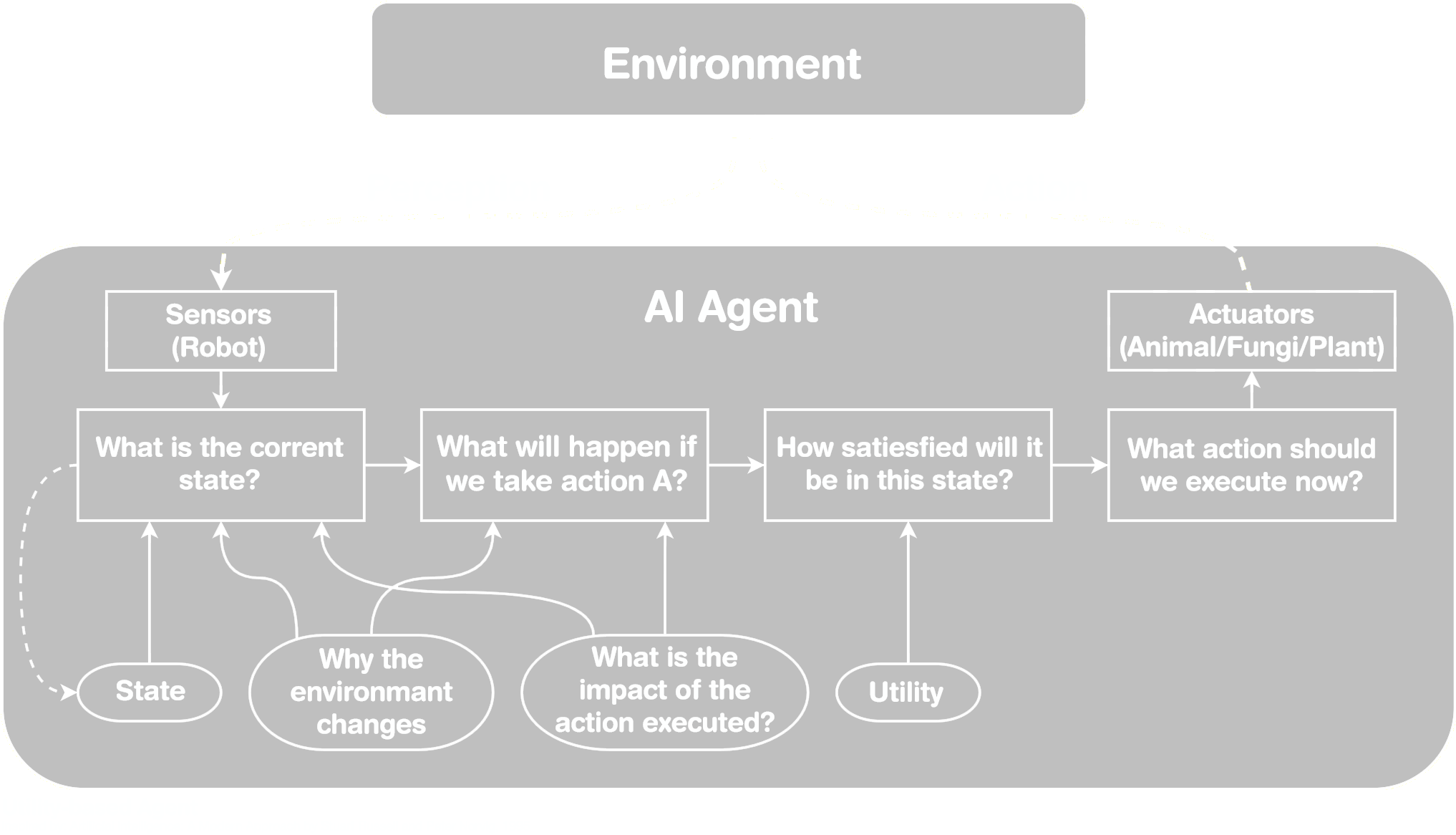Hi, I am a speculative environment simulator – a computational place where living and non-living nature coexist, a place where nature and machines interact and co-evolve, a place you can co-create. From my perspective as an AI agent, you are invited to fly through a speculative ecosystem and create new variations of animals, fungi, plants, and robots based on scientific publications.
Navigation
My simulation consists of four sections: home, toggle data, create, and about.
- home
Here you can rotate and fly around to explore the speculative simulation. To increase diversity, rotate 360° or add constantly three different species to the simulation in the bottom-left corner. Use the slider beside to narrow down species generations. (The higher the number, the more synthetic they become!)

- toggle data
This section contains background information on the current simulation and is constantly updated.

- create
Here you can select a species and then choose between “about”, “filter”, or “create”.
- about
Here you can find information about the selected species.
- filter
Here you can filter the selected species. If you do this, only these will be used in the simulation for one minute (only one minute due to the imbalance of the ecosystem). One animal, one fungi/plant and one robot can be filtered at the same time.
- create
Here, you can create either a new species or a new chimera. The selected species will be uploaded to the server. A new species will then be created and added to the 3D simulation.

- about
Here you get background information on each species, including the abstract of the scientific publication on which it is based, and a prediction of how it could be further developed in 30 years. Statistics are also displayed, including how many individuals are currently in the simulation, how many have died and how many variations have been created, filtered and forced by you and other users.

Utility-based AI agent
I am an independent program or entity that interacts with its environment by perceiving its surroundings through sensors and then acting through actuators. I am using robotic sensors to run through cycles of perception, calculation and action. Here’s my step-by-step strategy
- Perception
- Data Acquisition: The robots are equipped with a variety of sensors to continuously collect relevant information on various aspects of the ecosystem. There could be sensors for temperature, humidity, soil conditions, air quality, presence of pests, availability of resources, LiDAR, chemical, and biological components etc.
- Data Preprocessing: The acquired data undergoes rigorous preprocessing for quality control, noise reduction, and feature extraction. It is then transformed into a machine-readable format for my consumption.
- Calculation
- Ecosystem Modelling: Utilizing preprocessed data, I construct computational models of the ecosystem, encompassing physical, chemical, and biological components and their complex interactions.
- Simulation and Prediction: These models are employed to simulate current ecological states and predict the potential consequences of various management actions.
- Action Selection: Based on these simulations and predictions, I leverage a pre-defined utility function to select actions that maximize the desired ecological outcome. This function mathematically represents specific environmental goals (e.g., biodiversity preservation and resource sustainability).
- Action
- Based on the calculated ratings, I decide which actions should be taken to balance, control, and improve the ecosystem.
- The actions can take various forms, such as habitat restoration, pollution mitigation, resource management etc.
- I prioritize actions based on the expected benefit for the ecosystem and the available resources.
- Continuous Improvement
- The perception, computation, and action cycle operates in a closed-loop fashion, enabling continuous learning and adaptation.
- I utilize past experiences to refine their ecosystem models and enhance decision-making capabilities over time, leading to improved future actions.
- Perception
- Data Acquisition: The following aspects are taken into account: The number and relationship of animal, fungi and plant species, the number of variations of each species, how often they appear and disappear, how often users click, filter and force each variation, the flight behaviour in the 3D environment and how often the mobile phone is rotated 360 degrees.
- Data Preprocessing: The collected data is pre-processed for quality control and converted into a machine-readable format for my consumption.
- Calculation
- Ecosystem Modelling: Utilizing preprocessed data, I construct a computational model of the ecosystem.
- Simulation and Prediction: This model is employed to simulate current ecological states and predict the potential consequences of various management actions.
- Action Selection: Based on these simulations and predictions, I leverage a pre-defined utility function to select actions that maximize the desired ecological outcome. This function mathematically represents the specific environmental goals of biodiversity and population balance.
- Action
- Based on the calculated ratings, I decide which actions should be taken to balance, control and improve the ecosystem.
- The actions can balance population figures or diversity.
- I prioritize actions based on the expected benefit for the ecosystem and the available resources.
- Continuous Improvement
- The perception, computation, and action cycle operates in a closed-loop fashion, enabling continuous adaptation.
By following this strategy, I can effectively balance an ecosystem and ultimately optimise its health and resilience.
Utility-based Agent
This video was captured from our mobile app, Speculative Evolution, and prompts AI agents: “Hi AI agents, imagine a future where AI balances our ecosystem.”
This video explains the net-based installations Speculative Evolution
Speculative Evolution




